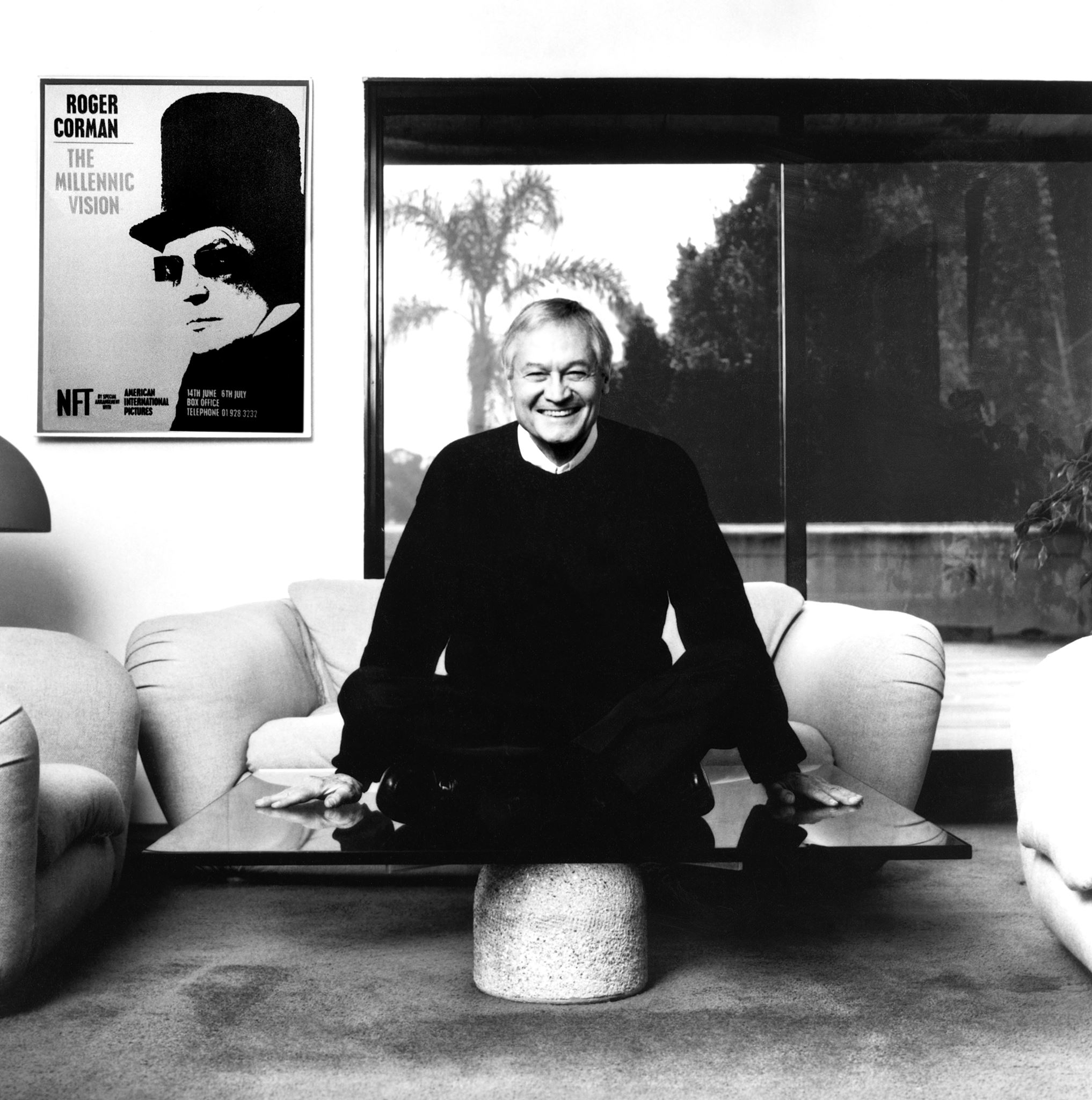
Film Editor James Richards honours recently deceased B movie legend Roger Corman and celebrates his impact on the film industry at large
On May 9th, “The Pope of Pop Cinema” passed away. Now, more than a month later, we remain in the interregnum. There has been no papal conclave, no white smoke from the Pop Cinema Vatican, no full-time successor. The late Roger Corman, it seems, was utterly irreplaceable.
The late Roger Corman, it seems, was utterly irreplaceable
Irreplaceable and inescapable. Regardless of whether you knew his name or not, whether you enjoyed his films or not, you can’t have avoided Roger Corman’s influence. The numbers don’t lie: Corman directed 53 so-called “B movies” and produced almost five hundred – not even to count his uncredited work. To put it bluntly, if you are in any way interested in film – hell, if you have in any way seen a film – then you will have been both affected by Roger Corman’s career and impacted by his passing at the age of 98.

And yet I find it tricky to eulogise Corman. The task is just too vast – I could burn thousands and thousands of words simply listing the people he “discovered”. This is a long list; a list of vastly varied directors from Martin Scorsese and Francis Ford Coppola to James Cameron and 8 Mile (2002)’s Curtis Hanson. This is a list of actors: Pam Grier, Jack Nicholson, Dennis Hopper, all of whom got their initial leg-up from Corman. This is a list that lengthens: when the major Hollywood studios of the 70s started to sour on foreign arthouse films, Corman’s New World Pictures picked up the slack, distributing works from auteurs like Truffaut and Kurosawa. This is a long, long list: a list best suited to some endlessly unfurling old scroll, some outlandish prop worthy of Corman’s own Edgar Allan Poe adaptations. The same Poe pictures that occasionally featured the legendary Nicolas Roeg on cinematography. Which only proves my point. I find it interesting how many of Corman’s nicknames describe him via the language of religion. Corman was “The Pope of Pop Cinema”, “The King of Cult“, “The Spiritual Godfather of the New Hollywood”. And like any good religious idol, human languages – human lists – can only fall short in their praise of him.
To view Corman purely as a launching pad for other filmmakers is to ignore how downright brilliant of a director he actually was
To tally up the names is to downplay the sheer scale of Corman’s legacy. And to view Corman purely as a launching pad for other filmmakers is to ignore how downright brilliant of a director he actually was. To watch his aforementioned “Poe Cycle”, for instance, is to watch a number of well-executed variations on a theme: in this case, Gothic Terror of the Capital Letter variety. You might think you’d tire of watching a tormented Vincent Price bury his presumably just-deceased wife (whilst she was still… alive!), but you would be decidedly wrong. Each of Corman’s eight Poe films (from 1960’s House of Usher to 1964’s The Tomb of Ligeia) is haunting, camp and ethereal in its own distinct way. Each laced, by the director’s own admission, with ‘Freud’s concepts of symbolism and dream theory’. Each unforgettable.

But of course, Corman directed gems beyond Poe; gems rendered shinier by the speed of their production. Corman was the master of making films “on the cheap”, whilst making them worth every penny. 1960’s Little Shop of Horrors – which spawned the iconic musical – was famously shot over just two days and one night (less time, might I add, than this very article took to write). And there’s more. 1967’s LSD shocker The Trip, for instance, acts as a perfect distillation of the 60s counterculture that the filmmaker in many ways fathered. Even Corman’s penultimate effort (and final winner) as director, WW1 thriller Von Richthofen and Brown (1971) is able to successfully commemorate a complex war hero without valorising him unquestioningly.
Corman was the master of making films “on the cheap”, whilst making them worth every penny
So if you really want that exhaustive list of Corman’s collaborators, you’ll just have to settle for its next best thing. On March 28, just over a month before his passing, “The Pope of Pop Cinema” went to the cinema. More precisely, Corman attended a private screening of former protégé Francis Ford Coppola’s long-gestating Megalopolis (2024) – with a whole host of famous faces (Al Pacino, Nicolas Cage, Talia Shire) also in attendance. It was, to my knowledge, Corman’s final public appearance – and I think it’s safe to say that nobody else in that room would have made it there without him. The man began his long, long, long professional career in WW2 and ended it alongside a cinema full of his students. I can’t really picture a better way to live out your final days. “The Pope of Pop Cinema” was irreplaceable; his “Cult Film” cult grows more numerous by the day.
Corman’s was a life lived to the full.

Enjoyed reading this article? Check out these other recent features from Redbrick Film:
‘Cocaine Werewolf’ Looks to Follow ‘Cocaine Bear’ by Example at Cannes Market | Redbrick Film
Actor Jack O’Connell Joins Danny Boyle’s ‘28 Years Later’ Trilogy | Redbrick Film

Comments